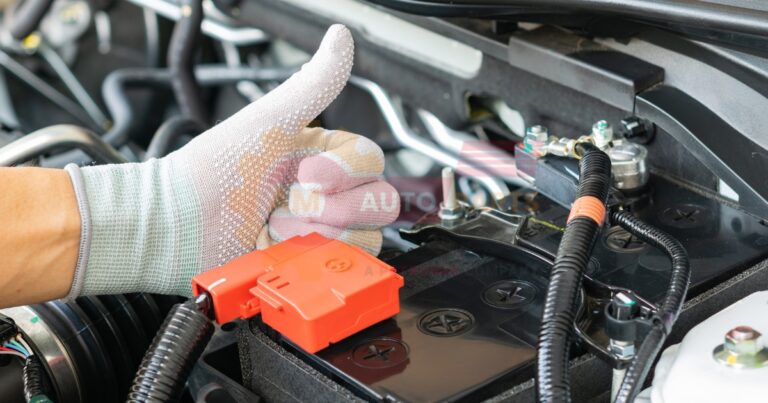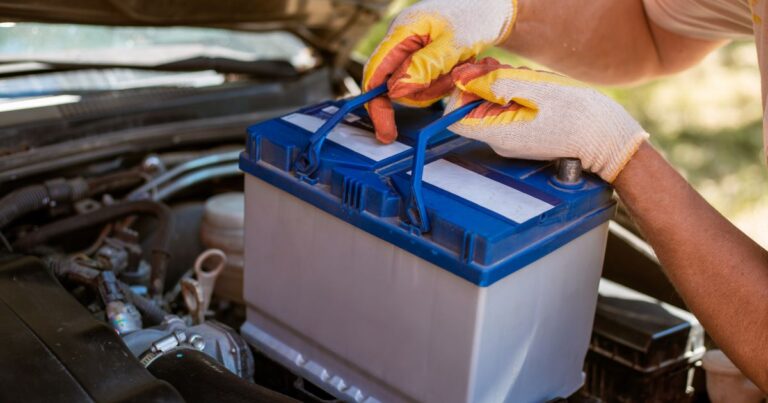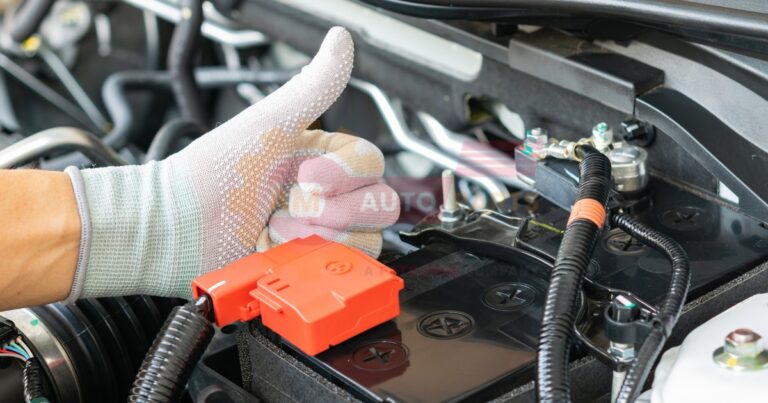Importance of Battery Recycling
Recycling automotive batteries is crucial for both environmental and economic reasons. These batteries contain hazardous materials that can harm the environment if not disposed of properly. By recycling, we can prevent soil and water contamination, ensuring a healthier planet for future generations. Additionally, recycling helps conserve natural resources by recovering valuable materials like lead and lithium, reducing the need for new raw material extraction.
Recycling also supports the economy by creating jobs in the recycling industry and reducing the costs associated with raw material procurement. It promotes a sustainable cycle where materials are reused, minimizing waste and environmental impact.
- Prevents soil and water contamination
- Conserves natural resources
- Supports job creation in the recycling industry
The Process of Recycling Automotive Batteries
Collection and Transportation
The first step in recycling automotive batteries is their collection and transportation to recycling facilities. This involves setting up collection points where consumers can drop off used batteries. Efficient transportation systems ensure that these batteries reach recycling centers safely and promptly.
Sorting and Dismantling
Once at the recycling facility, batteries are sorted based on their type and composition. This is crucial because different batteries require different recycling processes. After sorting, the batteries are dismantled to separate the components, such as lead, plastic, and acid.
Material Recovery and Reuse
The dismantled components undergo various processes to recover valuable materials. For instance, lead is melted and purified for reuse, while plastic casings are recycled into new products. This material recovery is essential for reducing the demand for new raw materials and minimizing environmental impact.
- Collection points for battery drop-off
- Sorting based on battery type
- Recovery of lead, plastic, and other materials
Environmental Impact of Battery Production and Disposal
Raw Material Extraction and Processing
The production of automotive batteries involves extracting and processing raw materials like lead, lithium, and cobalt. This process is energy-intensive and can lead to significant environmental degradation, including habitat destruction and pollution.
Energy Consumption in Battery Manufacturing
Manufacturing batteries requires substantial energy, contributing to greenhouse gas emissions. By recycling batteries, we can reduce the energy needed for production, as recycled materials require less processing than raw materials.
Emissions and Waste Generation
Battery production and disposal generate emissions and waste that can harm the environment. Recycling helps mitigate these effects by reducing the volume of waste sent to landfills and lowering emissions from manufacturing processes.
- Habitat destruction from raw material extraction
- High energy consumption in manufacturing
- Emissions and waste from production and disposal
Challenges in Battery Recycling and Disposal
Technological Limitations
Recycling automotive batteries presents technological challenges, as not all battery types are easily recyclable. Developing efficient recycling technologies is essential to address these limitations and improve recycling rates.
Regulatory Hurdles
Regulations governing battery recycling vary by region, creating challenges for companies operating in multiple jurisdictions. Harmonizing these regulations can facilitate more efficient recycling processes.
Economic Viability
The economic viability of battery recycling depends on market conditions and the cost of raw materials. Fluctuations in these factors can impact the profitability of recycling operations.
- Technological challenges in recycling
- Varying regulations across regions
- Market conditions affecting economic viability
Innovations in Sustainable Battery Technology
Advancements in Battery Design for Recyclability
Innovations in battery design focus on making batteries easier to recycle. This includes designing batteries with fewer components and using materials that are easier to recover.
Alternative Materials for Eco-Friendly Batteries
Researchers are exploring alternative materials for battery production that are more environmentally friendly. These materials aim to reduce the environmental impact of battery production and disposal.
- Designing batteries for easier recycling
- Exploring eco-friendly materials
- Reducing environmental impact through innovation
The Role of Manufacturers in Battery Recycling
Extended Producer Responsibility
Manufacturers play a crucial role in battery recycling through extended producer responsibility (EPR) programs. These programs hold manufacturers accountable for the entire lifecycle of their products, including disposal and recycling.
Design for Recyclability
Manufacturers are increasingly designing batteries with recyclability in mind. This involves using materials that are easier to recycle and designing products that can be easily dismantled.
- EPR programs for manufacturer accountability
- Designing products for easier recycling
- Manufacturer initiatives in battery recycling
Consumer Responsibility in Battery Disposal
Proper Disposal Methods
Consumers have a responsibility to dispose of batteries properly. This means taking used batteries to designated collection points rather than throwing them in the trash, where they can harm the environment.
Recycling Programs and Initiatives
Many recycling programs and initiatives are available to help consumers dispose of batteries responsibly. These programs provide convenient drop-off locations and educate consumers about the importance of recycling.
- Proper disposal at collection points
- Participation in recycling programs
- Consumer education on battery recycling
Global Trends in Automotive Battery Recycling
Regional Differences in Recycling Practices
Recycling practices vary significantly across regions due to differences in regulations, infrastructure, and consumer awareness. Understanding these differences is crucial for developing effective global recycling strategies.
International Regulations and Standards
International regulations and standards play a vital role in shaping battery recycling practices. Harmonizing these standards can facilitate more efficient recycling processes and promote global sustainability.
- Variations in regional recycling practices
- Impact of international regulations
- Global strategies for effective recycling
Future Outlook for Battery Recycling and Disposal
Emerging Technologies in Battery Recycling
Emerging technologies are set to revolutionize battery recycling by making it more efficient and cost-effective. These technologies focus on improving material recovery rates and reducing environmental impact.
Predicted Market Growth and Opportunities
The battery recycling market is expected to grow significantly in the coming years, driven by increasing demand for sustainable practices and advancements in recycling technology. This growth presents opportunities for businesses and investors.
- Innovations in recycling technology
- Market growth driven by sustainability
- Opportunities for businesses and investors
All Makes Autoparts’ Commitment to Sustainable Battery Management
All Makes Autoparts is a leader in sustainable battery management, and promoting eco-friendly practices. Our commitment to sustainability sets an example for other companies in the industry. RV battery recommendations Choose deep-cycle batteries with high amp-hour ratings for longer-lasting power in your RV and consider investing in lithium-ion batteries for improved performance and lighter weight AGM battery performance
Automotive BMS importance Automotive BMS is crucial for keeping electric car batteries safe and making them last longer It helps manage the battery power so the car can run efficiently and go farther on a single charge Car battery charging problems can happen when your car’s battery doesn’t get enough power to stay full This can make it hard to start your car or use things like lights and radio
Vehicle power optimization helps cars use less fuel and go farther It makes engines work better so vehicles can be more efficient
The Circular Economy of Automotive Batteries
Closing the Loop in Battery Production and Recycling
The circular economy model aims to close the loop in battery production and recycling by ensuring that materials are continuously reused. This approach reduces waste and conserves resources, promoting long-term sustainability.
Economic Benefits of a Circular Approach
Adopting a circular economy approach offers significant economic benefits, including cost savings from reduced raw material procurement and increased efficiency in recycling processes. This model supports sustainable growth and environmental stewardship.
- Continuous reuse of materials
- Cost savings from reduced raw material use
- Promoting sustainable growth through circular practices
According to the U.S. Environmental Protection Agency, up to 99% of lead-acid batteries are recycled in the United States. This high recycling rate demonstrates the effectiveness of current recycling programs and the potential for further improvements.
The global lithium-ion battery recycling market is projected to reach 8.1 billion by 2030, growing at a CAGR of 18.3% from 2021 to 2030. This growth highlights the increasing importance of battery recycling in the global economy.
FAQs
What is the environmental impact of battery disposal?
Battery disposal can have significant environmental impacts if not managed properly. Improper disposal can lead to soil and water contamination, harming ecosystems and human health. Recycling helps mitigate these impacts by recovering valuable materials and reducing waste.
How are automotive batteries recycled?
Automotive batteries are recycled through a process that involves collection, sorting, and dismantling. The components are then processed to recover valuable materials like lead and plastic, which are reused in new products. This process helps reduce environmental impact and conserve resources.
What happens to old car batteries?
Old car batteries are typically collected and sent to recycling facilities. At these facilities, they are dismantled, and valuable materials like lead and plastic are recovered for reuse. This process helps prevent environmental contamination and conserves natural resources.






